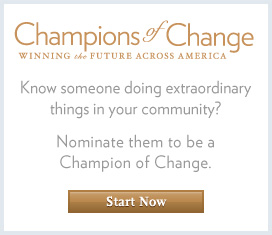Champions of Change Blog
ABCing: Formula For Success
Posted by on February 27, 2013 at 2:15 PM EDT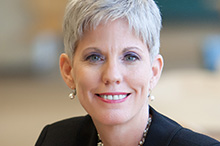 Becky James-Hatter is being honored as a Champion of Change for her efforts in Educational Excellence for African Americans.
Becky James-Hatter is being honored as a Champion of Change for her efforts in Educational Excellence for African Americans.
For almost 25 years I have been a part of Big Brothers Big Sisters. As the founder of Big Brothers Big Sisters of Central Louisiana to the Vice President of Program in metropolitan Atlanta and now President and CEO of Big Brothers Big Sisters of Eastern Missouri for 19 years, I have learned a lot of lessons along the way. In this time, I have been reinforced by so many individuals, including my family, business mentors, board members, colleagues, volunteers and donors, but it is the children and families who have taught me the most, especially my Little Sister of 15 years, KeSheara Ross-Eason.
With so many daunting realities facing too many children and families, I am not tired, I am strengthened. Despite the stresses of a growing organization, now the 6th largest Big Brothers Big Sisters affiliate in the nation and consistently performing at the highest levels, I am not distracted, I am more steadfast in several core beliefs.
Every business -- for-profit or non-profit -- must know itself. It must be clear about its mission and vision. It must identify and understand the fundamental needs of its customer or primary client. It must be able to create sustaining value and articulate a clear definition of success. For years, Big Brothers Big Sisters has defined itself as the organization that “makes matches” and prevents young people from becoming teenage parents, high school dropouts and juvenile delinquents. But candidly, that is not enough! We must be about building trusting and enduring relationships and stand up to the “rotating door” of adults coming in and out of children’s lives. Actually, that is in great part the problem. And no parent, community or organizational leader can be satisfied with simply preventing; our children need to progress and prosper each day, each year, through adulthood.
With these ideas in mind, Big Brothers Big Sisters of Eastern Missouri is determined to do everything within its power to build trusting and enduring relationships not only among our “Bigs” and “Littles” but with our parents and teachers. We believe deeply in the transformative power of personal relationships and how they can positively affect the whole child. In addition to our “built to last relationships”, we are relentlessly focused on our children ABCing: Attending School, Behaving when there and experiencing Classroom success in reading and math. We believe that this formula is our best opportunity to change our children’s lives for the better, forever and at scale.
Our experience shows that young people who have at least one positive and enduring relationship with a caring adult, and who focus on their ABCs, can:
- achieve in school, grow socially and intellectually, and build an educated community;
- avoid juvenile delinquency and create safer neighborhoods;
- coexist with authority, neighbors and peers, fostering healthy communication, lifestyles and cultures;
- become exemplary employees who are responsible, respectful and resourceful: and
- join the military and honorably serve and protect our country.
For our children, community and country, we commit ourselves to facing, squarely, the burdens of our young people and families and not wavering, at any time or on any point, to go the distance with them; offering great love, support and encouragement.
Becky James-Hatter is President and CEO of Big Brothers Big Sisters of Eastern Missouri
Learn more aboutEducation Is The Civil Rights Issue Of Our Time
Posted by on February 27, 2013 at 2:00 PM EDT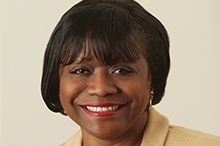 Esther Bush is being honored as a Champion of Change for her efforts in Educational Excellence for African Americans.
Esther Bush is being honored as a Champion of Change for her efforts in Educational Excellence for African Americans.
I am honored to be designated a Champion of Change for African American education, an issue that has been close to my heart for as long as I can remember, and one that I am fully committed to.
I can still hear my parents’ voices as they told us that nothing was more important than going to school and getting an education. They were right, of course.
Few things matter more to a community's well-being than the quality of its public education. You can see its long-range impact in virtually every aspect of daily life, from our employment rates to crime rates, from the number of houses being bought to the number of teen pregnancies. As a teen, I attended Westinghouse High School in Pittsburgh, Pennsylvania. I began my professional career as a high school teacher. I know firsthand how important great teaching and quality education is to our future.
Here in Pennsylvania, we know that to have healthy and productive communities, education must be our Number 1 priority. That's especially true among low-income black students enrolled in the most at-risk, low-income schools.Since 2008, we've seen slow but steady strides made in closing the “achievement gap” between black and white students. One of the proudest occasions of my life was facilitating and witnessing the birth of the Urban League of Greater Pittsburgh Charter School in 1998, where the achievement gap between black and white students has virtually been eliminated.
For the past several decades, I have worked tirelessly to build diverse coalitions and to unite diverse leaders in Baltimore, New York, Hartford, and Pittsburgh to advocate for education reform and equity. As President and CEO at the Pittsburgh Urban League, I am called on to be a voice of reason and a coalition builder. To that end, three years ago I was asked to convene African American visionaries representing the region’s corporate, nonprofit, government, religious, civic, and community sectors to respond to the needs of low-performing students in Pittsburgh Public Schools and to affect a culture of academic achievement and success for the region’s African American youth. This group has evolved to be the African American Achievement Trust (AAAT.)
The Collective Focus, led by the Urban League of Greater Pittsburgh in partnership with the AAAT and supported by the Pittsburgh Public Schools and the United Way of Allegheny County, has identified a two-pronged intervention approach wherein African American Achievement Trust participants volunteer as sixth grade mentors and twelfth grade Graduation Coaches.
Joining the ULGP in driving education reform in Pittsburgh and across Pennsylvania are the Urban League of Lancaster County, the Urban League of Philadelphia, and the Urban League of Shenango Valley. Collectively we are known as Pennsylvania’s Excellence and Equity Project Consortium, a part of the National Urban League’s Equity and Excellence Project (EEP). EEP seeks to improve outcomes for underserved students in public schools by building the capacity of parents and communities to successfully advocate on behalf of children and youth in Pennsylvania, Tennessee, New York, and Ohio. This project is an important part of the National Urban League mission: to enable African Americans to secure economic self-reliance, parity, power and civil rights.
Education is the civil rights issue of our time. History has taught us that change and equality are won in the classroom. All American children deserve a quality education. And, with history as our teacher, I am pretty certain that the classroom is where the battle for change and equality will continue to be fought and won. Not by me or any one of us alone, but by many of us working together. I am humbled to be singled out as a Champion of Change for African American education. I accept it on behalf of the hundreds of individuals who are working with me in Pittsburgh and throughout the United States to make such change possible.
Esther L. Bush is the President and CEO of the Urban League of Greater Pittsburgh
Learn more aboutYour Passion Will Position You For Your Purpose
Posted by on February 27, 2013 at 1:47 PM EDT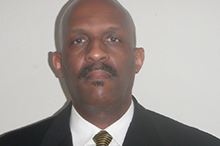 Michael Graham is being honored as a Champion of Change for his efforts in Educational Excellence for African Americans.
Michael Graham is being honored as a Champion of Change for his efforts in Educational Excellence for African Americans.
I am truly honored and feel very blessed to be selected as a White House Champion of Change for my advocacy of children with disabilities and special needs that learn differently and are truly are exceptional. The parents of these children greatly need our support in helping their children get the best education possible. These supports will make contributions to our communities nationwide.
I have come to learn through advocating for children with special needs that your passion will position you for your purpose. May 12, 1999, is when my journey began. On that date, my daughter, Catherine Imani Graham, who happens to have Downs Syndrome, was born. She is now thirteen years old, in the sixth grade, and doing very well. My passion is renewed daily each time I look at her and other children like her.
After several years of my wife and I not knowing what we didn’t know about Catherine’s education, we became frustrated. My journey to this award started with a program I found out about in 2005 called Partners in Policymaking. This is a leadership training course for parents of children with disabilities. Finding out what I didn’t know as a parent, along with the reality that much of the information given prior to that point was inaccurate, made my future path clear.
My anger was replaced and repackaged as advocacy. Having information and not sharing it would be perpetuating that system of inaccuracies concerning parents and our children with disabilities. It was vital to me to consider the culture of our schools, the assumptions, unchallenged beliefs, and attitudes that surround special needs children, their education, and the families that love and support them. Becoming a change agent with visibility was a must. Being a veteran and having served in the Air Force Reserve for twelve years as a flight medical technician reinforced my commitment to serve at a deeper personal level.
The National Association of State Directors of Special Education (NASDSE) in Washington, DC and the IDEA Partnership there has been instrumental in my growth for the last eight years. Their mentoring and opportunities have given me ways of having an impact on public education and policies for children in special education. On a local level, I am a former board of director’s member for the ARC of South Carolina, part of the Special Education Task Force of the state superintendent South Carolina Department of Education, and on the Executive Committee of the South Carolina Advisory Council on the Education of Students with Disabilities. On a federal level, I am a part of the IDEA Partnership, invited by the U.S. Department of Education, Office of Special Education Programs (OSEP) to be a evaluator of a funded project. These are just a few mentioned occasions where I was able to be the balancing voice of a parent at the table when policy is being developed on all levels concerning our children with special needs and their education. This is my chosen avenue for helping to transform communities into greatness and challenging the achievement gaps of all of our children.
This focus has deepened specifically in the last year as I joined the African American Children with Learning Disabilities (AACLD). I am currently serving as the chair of their Parent Training Institute Advisory Commission. Nancy Tidwell, I am forever grateful for your recognition of my passion and giving me the opportunity to share it through your organization. My goal is to give one small step of encouragement to other parents involved with their children’s education so I can help them to do even greater things.
The two things that drive me now are quotes: “Let each become all that they are capable of becoming;” and Proverbs 31:8-9: “Open thy mouth for those unable to speak for themselves, for the rights of all who are desolate and defenseless; Open your mouth, judge righteously and plead the cause of the poor and needy.”
Michael Granham works at the Durham VA Medical Center
Learn more aboutA Child With A Dream Is A Child With A Future
Posted by on February 27, 2013 at 1:45 PM EDT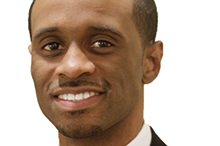 Kyle Bacon is being honored as a Champion of Change for his efforts in Educational Excellence for African Americans.
Kyle Bacon is being honored as a Champion of Change for his efforts in Educational Excellence for African Americans.
Part of my mission and purpose is to help transform the lives of young people, families, and communities through the education and the development of our most underserved and under-supported youth. It is a passion that was modeled by my own family and a gift I received as a child of a longtime community leader and dedicated educator.
Many others also poured into my life over the years -- helping me walk into my purpose: an attorney cousin who planted a seed about college; a church community that supported my academic and small business endeavors; many loved ones who believed in me; and grandparents who made a way. But it did not take long for me to realize how many young people do not have such opportunities or a strong support system, and I saw first-hand what a difference that makes.
At Howard University, I studied International Marketing. I continued to be involved in my community, this time as a volunteer in public schools and Community Outreach Coordinator for our student government. I helped to mobilize the campus to make an impact in the lives of our surrounding community, especially the young people. I understood how important it was for all of us to just be there for a young person and be involved in their lives.
I channeled this interest as an independent academic resource worker as I worked with students in public and independent schools. Many struggled academically, but nearly all had a personal struggle. I found that, by showing genuine interest in a student’s success, their confidence began to build. I developed strategies to help through direct instruction and compassionate intervention, and saw many who had been failing come to achieve proficiency. These same strategies worked for enrichment and educational programs I developed for youth in Ohio who had fallen to the fringes through the penal system.
This is why I feel honored to work now as Mentor Program Coordinator of the U.S. Dream Academy Learning Center in Washington, D.C. I support the Dream Academy’s mission of empowering children who are at risk of incarceration to maximize their potential by providing them with academic, social, and values enrichment through supportive mentoring and the use of technology. In my current role, I help build relationships and layers of support for the young people we serve by bringing in mentors and volunteers who pour into the lives of our Dream Kids, as well as cultivating relationships with businesses, churches, and other key stakeholders in our children’s futures.
I’m passionate about the work I do because I have seen far too many young people end up in prison cells or the cemetery, where many promising and precious gifts die. When the potential to do dynamic things is quenched or life is ended prematurely, this world becomes less bright. At U.S. Dream Academy, we believe that a child with a dream is a child with a future – a bright future. Every child deserves the opportunity to live a life of choice of who and what they want to become, and to have the opportunities and supports to explore and realize their dreams. Through the caring adults who mentor and support the students in our Learning Center, our three pillars are brought to life: academic skill building, character development, and shaping student dreams of what they want to be when they grow up.
It is rewarding to share my passion with other adults who create time in their own busy lives to invest in the future by serving as dedicated mentors. It is thrilling to take part in the lives of young people as they learn they really are important and their lives do matter. I desire to live my life in such a way that inspires others to trust God, live by faith, and operate in the gifts and passions given them by investing in our youth. I am humbled and honored to be recognized as a White House Champion of Change. I’m appreciative of all who have believed in, supported, and invested in me and hope that someone is moved to take action today to support our dynamic Dream Kids in one of our U.S. Dream Academy Learning Centers across the country.
Kyle Bacon is a Mentor Program Coordinator of the U.S. Dream Academy Learning Center
Learn more aboutDiplomas Now
Posted by on February 27, 2013 at 1:32 PM EDT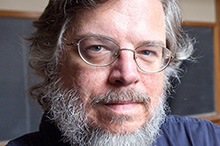 Robert Balfanz is being honored as a Champion of Change for his efforts in Educational Excellence for African Americans.
Robert Balfanz is being honored as a Champion of Change for his efforts in Educational Excellence for African Americans.
My professional work has revolved around figuring out what it will take to enable all our students to graduate from high schools prepared for adult success. I believe our current outcomes are an affront to what America can and needs to be. Far too many of our students, especially students of color who live in poverty, fail to graduate from high school. The good news is that, for the first time in forty years, the nation’s high school graduation rate is improving, and at a significant rate. Over the past four years, the graduation rate has increased by five percentage points. Those gains have been driven by improvements in the graduation rates of African American and Latino students, the very students for whom the dropout crisis has been the most acute. Much work, however, remains in order to insure that all students have the educational experiences and supports they need to graduate from high school prepared for college and career. This is essential because there is no work in the 21st century which can support a family without high school diplomas.
The challenge that remains for African American students is that, even with the progress of the past five years, one in three students do not graduate with their class, and one in four attends a high school where graduation is not the norm. About 11 percent of high schools, 1400 in number, produce half of the nation’s African American and Latino dropouts. Nearly all these high schools, in turn, educate students who live in neighborhoods of concentrated poverty. To move forward, we must organize our efforts. We must not only turnaround these schools and insure they provide a quality education which prepares their students for success, but we must also insure that students within the school have the supports they need to overcome the challenges of poverty. Poverty makes it more difficult for students in the nation’s low-graduation-rate high schools to come to school every day, pay attention in class, and get their school work done. Research shows that the best teachers and most evidence-based curriculums will have muted impacts if students are not able to attend, focus, and try.
Fortunately, it is being demonstrated more and more that the hungry bear of poverty can be pushed back. Whole school instructional and teaching improvements can be enhanced through the use of early warning systems and better targeted student supports provided by a growing number of non-profits and community organizations using evidence based strategies. These solutions will keep many more students on the path to high school graduation. The “Our Diplomas Now” program, for example, is showing that chronic absenteeism, behavioral struggles, and course failures in our most challenged schools can be cut in half or more.
Yet to truly provide all students who live in poverty with reliable pathways to adult success, bolder action will be needed. We need an innovation competition to re-design middle and high school so that it will be routine for students who live in high poverty communities to take and succeed in high school credit-bearing classes in eighth grade, and college credit-bearing classes in twelfth grade. This will provide students with direct experience to the expectations of the next level of schooling, while still providing the familiarity and support of their current school, where they are seen as the most advanced rather than the least experienced students. This is critical because we know it is in the transition years – sixth grade, ninth grade and the first year of college – when most of our high poverty students fall off the path to high school graduation and post-secondary success. As importantly, this plan would enable students to complete college in three years, which means financial aid can be spread over fewer years, increasing the amount available each year. Finally, what would have been the fourth year of college can be used as a year of community and national service (in exchange for enhanced financial aid), working in the highest-needs schools to provide the person-power needed to give students the tutoring, mentoring, role models, nagging, and nurturing they will need to overcome the challenges of poverty and succeed in more demanding courses.
There is one final component that will be required. It was driven home to me during a visit to a school we were helping in Chicago. The ninth grade class was reading “A House on Mango Street,” and the teacher, as a discussion prompt, asked the class, “if [they] could, would [they] leave their neighborhood, and, if so, why.” Almost every single student said they would, and almost every one of them said it was because of their near-daily exposure to violence. Part of me at that moment felt that, instead of seeking to improve the school, we should be organizing an evacuation. But then, one student said it was only worth leaving if the violence did not follow them. What we need to acknowledge is that within the sub-set of schools which drive the dropout crisis, there is a further sub-set, which needs to take on a therapeutic role, one that both helps students cope and overcome the negative and often crippling aspects of exposure to violence, and one that shows that alternatives to violence exist. The truth is, in our most impacted neighborhoods, the public school is often the only societal institution with a physical presence in the community. As such, it needs to offer more than just academic instruction; it needs to provide students with the academic and non-academic experience and supports they need to thrive. Right now, schools are not resourced for this mission. To do this, we will need to become much better at integrating the funds and efforts currently housed in other city, state, and federal social service and justice agencies, usually disconnected from the schools, into a set of preventative, therapeutic, and wrap-around supports provided in the schools in our most challenged neighborhoods.
Robert Balfanz is a professor at Johns Hopkins University
Learn more aboutCommon Sense: Attendance Matters
Posted by on February 27, 2013 at 1:02 PM EDT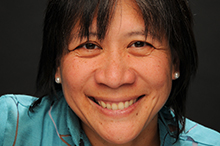 Hedy Chang is being honored as a Champion of Change for her efforts in Educational Excellence for African Americans.
Hedy Chang is being honored as a Champion of Change for her efforts in Educational Excellence for African Americans.
I am thrilled and honored be selected as a White House Champion of Change for my efforts with Attendance Works to reduce chronic absence. The truth is Ralph Smith, my mentor and the managing director of the Campaign for Grade-Level Reading, was the inspiration for this work and deserves equal credit. Seven years ago, he asked me to examine, on behalf of the Annie E. Casey Foundation, whether missing too much school in the early grades was one of the reasons so few low-income children were reading proficiently by the end of the third grade. He knew that kids who don’t reach this benchmark are much less likely to graduate from high school because by fourth grade they start falling rapidly behind because they can’t read in order to learn.
So what did we find? Our research confirmed what we know from common sense: attendance matters. Chronically absent students – those who miss ten percent or nearly a month of school – do worse academically. We also learned poor attendance is a huge problem that starts much earlier than middle and high school. One in ten kindergarten and first grade students nationwide miss nearly a month of school each year. In some cities, the rate is as high as one in four elementary students. In some schools, chronic absence affects fifty percent of all of the students!! Large numbers of children who are chronically absent results in less learning for everyone.
Children in poverty are four times more likely to be chronically absent than their more affluent peers. They also suffer the most academically because they lack the resources to make up for the time they missed in the classroom. They are also likely to face challenges like unstable housing, poor health and nutrition, and unsafe neighborhoods that lead to multiple years of chronic absence. Chronic absence is disproportionately high among young African Americans and other children of color who are more likely to live in poor, environmentally-challenged, low-income neighborhoods with high levels of community violence.
What motivates me to be a passionate advocate for change is the realization that most schools and communities don’t even know they have a problem in the first place. Too often, absences aren’t seen as a problem as long as they’re excused, or schools and families only worry when a child misses several days in a row and fail to recognize the cumulative impact of missing a day every couple weeks. Data can help identify which students are at risk. If large numbers of students are affected, it could be an indicator of a systemic community issue, like high rates of asthma or the lack of safe paths to school. It could also signal a serious school problem, such as a lack of engaging and meaningful instruction or unwarranted suspensions pushing young people out of the classroom. Insights from students, families, teachers, social workers, and nurses can help clarify why students are not showing up to class and what programmatic solutions are needed to improve attendance. Yet, currently, no federal and very few state laws require schools to track and report on chronic absence. We are turning a blind eye to an enormous problem and losing out on an opportunity to close the achievement gap.
In 2010, I launched Attendance Works, to ensure schools and communities use attendance data to intervene early before absences result in academic and behavioral challenges that are much harder to ameliorate. The good news is that chronic absence is a solvable problem. The key is for schools, community agencies, and families to work together to: a) build a habit and a culture of regular attendance; b) use data to monitor when chronic absence is a problem; and c) identify and solve barriers to getting children to school. We can turn chronic absence around by making it a priority, driving with data, and using positive supports rather than punitive action to engage families and students in showing up to school.
Hedy Chang directs Attendance Works
Learn more about
- &lsaquo previous
- …
- 80
- 81
- 82
- 83
- 84
- 85
- 86
- 87
- 88
- …
- next &rsaquo

